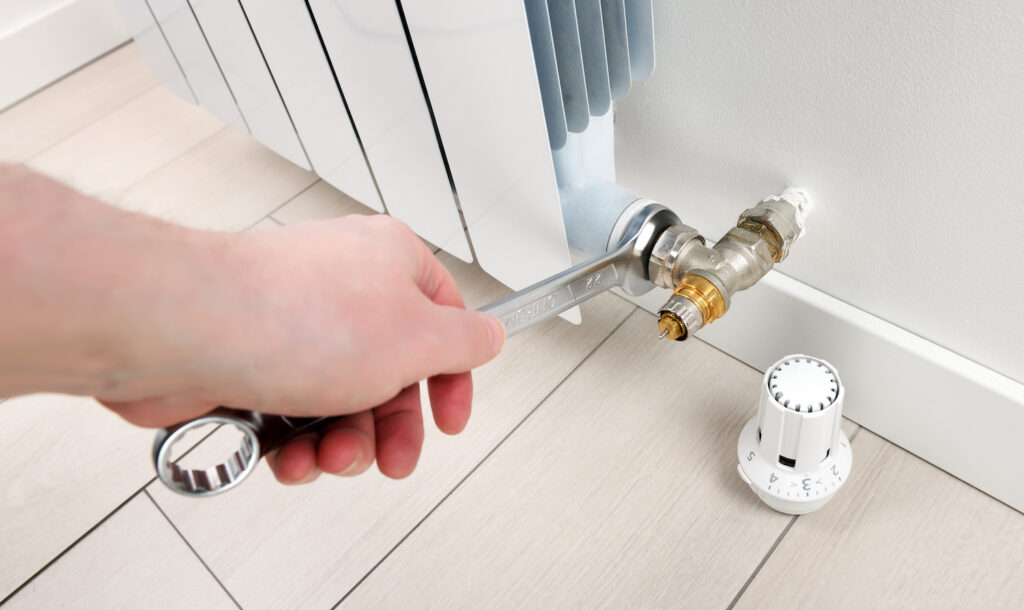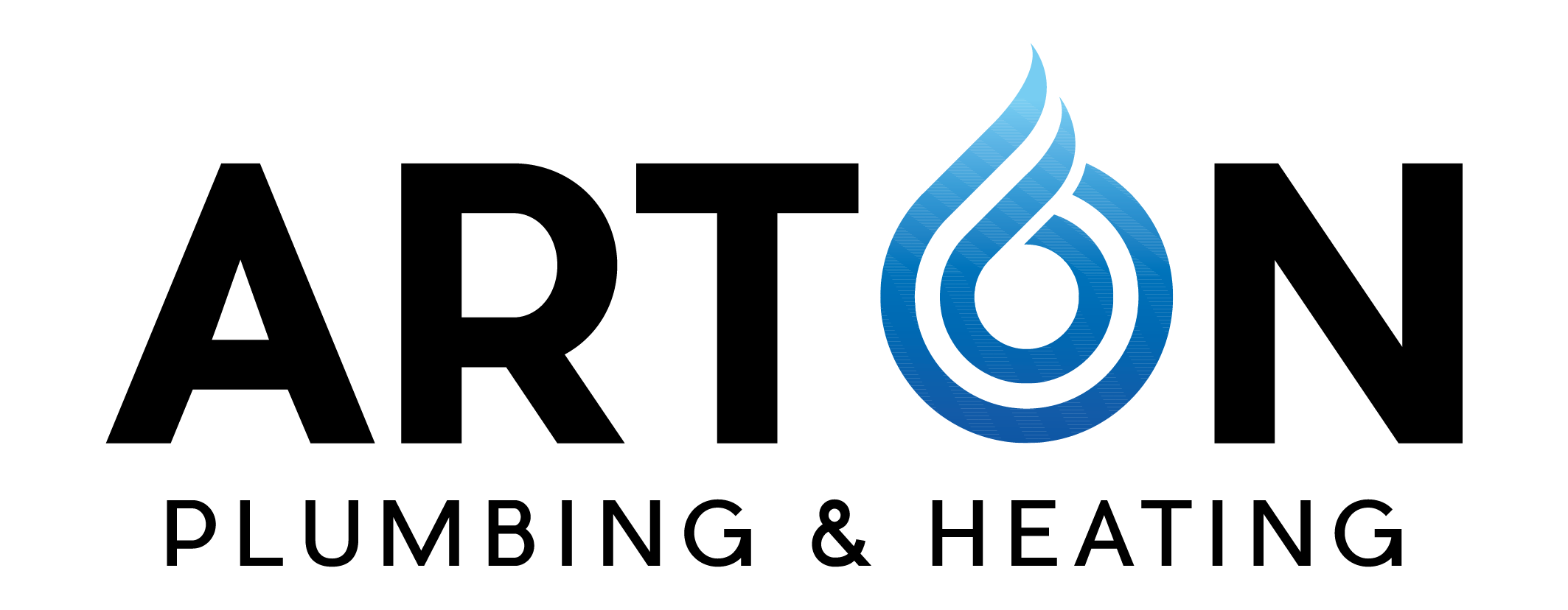There are many reasons for changing a radiator in your home– it might not work as well as it used to, or perhaps you want to upgrade the style of your radiator to match your decor. Rust and damage are also good reasons for considering a new radiator installation.
Whatever the reason for replacing your radiators, the work must be done correctly, or you risk your entire central heating system failing when you need it most! Without well-functioning radiators, your boiler’s hard work will be lost to the ether (and your money along with it!).
In this post, we’ll explore how to replace a radiator in your home.
How do I know if I need a new radiator?
Replacing your radiators is probably not something you’ve considered up to now. After all, you’d expect the radiators in your home to last a long time. Like most things, though, they don’t last forever.
At some point, you may have to look at changing a radiator in your home.
Wear and tear, bumps, and scrapes can all contribute to the length of time your radiators will keep performing at their best.
If you’ve noticed that your home isn’t feeling as warm as it used to, but you haven’t got any issues with your hot water, it could be a sign that your radiators aren’t performing.
If that’s the case, it’s not all bad news! New, modern radiators are much more advanced than older models, meaning they’re more energy efficient, and upgrading them could save you money on your energy bills.
The question is, can you change a radiator yourself?
Is it easy to change a radiator?
As with anything home improvement-related, if you’re not confident, you should enlist the help of a professional.
Changing a radiator for a model that’s the same is relatively easy as long as the pipes and brackets are in the same place.
You should also check the depth as some radiators might sit closer to or further away from the wall.
If you’re not experienced at changing radiators, there’s a chance that some water will escape during the process, and you could end up with damaged flooring or walls, making it an expensive job.
If you’re considering upgrading to a different style or size of radiator, then it’s worth getting a plumber involved.
We’ve already mentioned that the pipes may not be in the same place, but it’s also essential to ensure your boiler can cope with a bigger radiator if that’s the route you’re going down.

Preparing to change a radiator
You’ve done your research on how to change a radiator. You’ve decided on the style, size, and colour of the replacement. But what should you be doing to prepare for the replacement of your radiator?
Here are a few pointers.
- Be sure of your measurements – if they differ, you’ll need a plumber.
- Ensure you have the right tools for the job.
- Make sure your heating system is turned off and cooled down.
- Clear the space where you’ll be working – there’s nothing worse than not having enough space to move.
- You’ll need a jug or bucket to catch the water you’re about to drain from the valve.
- Towels are handy to have close by in case of any spillages.
Now, you’re ready to begin.
How to remove a radiator without draining the system
You can remove a radiator without draining the system; however, you must drain the water from the individual radiators you are replacing.
The water supply to the radiator will stop when you close the valves, but you must ensure the central heating is switched off and the system has cooled down thoroughly before you start the job.
1. Isolate the radiator
Turn off the valves on both ends of the radiator to stop water flowing in from the rest of the system. This helps ensure that only the water within that radiator will drain.
2. Drain the radiator
Once the radiator is isolated, loosen one of the nuts connected to the valve using an adjustable spanner. Position a container underneath to catch the water as it drains out. Be careful to only allow a little water out at a time, not a deluge!
3. Remove the radiator
Once all the water is drained, remove the valve and take the radiator from its brackets. There may be a bit of water spillage during removal, so keep some towels handy to protect the floor.
4. Refill and repressurise
Once you’ve installed the new radiator(s), you must refill and repressurise the system. This involves adding water to the system, bleeding the new radiator(s) to remove trapped air, and checking the boiler’s pressure.
Following these steps can save time and prevent unnecessary draining and refilling of the entire system, but if you’re replacing several radiators, draining the whole system may be more practical.
Is it okay to buy a second-hand radiator?
There are some good deals to be had on second-hand radiators, but you should be cautious when you’re choosing anything pre-loved. While it might look fine on the outside, it may be corroded on the inside.
For original period radiators, it’s worth buying from a professional reclaimer so you can be sure it’s been refurbished inside and out.
Remember also that second-hand radiators are much less energy efficient than modern radiators, so while it might be cheaper to buy upfront, it will cost you more to run.
Can you change a radiator yourself?
If you’re replacing a radiator in your home with a like-for-like model, it’s possible to do the work yourself. However, if you’re upgrading to something that doesn’t match up with the pipes and brackets already in place, you’ll need help from a plumber.
Arton Plumbing and Heating is a local family-run business providing plumbing and heating services to Maidstone and the surrounding areas.
Our friendly Gas Safe registered engineers are qualified to repair and replace your existing central heating system and radiators.
We work with our clients to minimise any disruption during our work, and we pride ourselves on looking after your home as though it were our own.
We’re well known for providing excellent customer service, so you can rest assured that you’re in good hands. Our five-star reviews speak for themselves!
FAQs on how to change a radiator
In this section, Arton’s Technical Service Manager, Lee Wenham, answers your frequently asked questions on replacing a radiator in your home.
How long do radiators last?
Radiators typically last between 15 to 20 years, though their lifespan varies depending on the material, quality, and level of maintenance.
Cast iron radiators can last up to 50 years, more than double that of steel panel or aluminium radiators. Regularly bleeding and flushing your system to remove debris can extend the life of your radiators.
How easy is it to change a radiator?
Changing a radiator can be a manageable DIY task for homeowners with basic plumbing skills and the right tools. However, it’s important to note that working with a heating system involves potential risks, and if you’re not comfortable or experienced with plumbing, it’s advisable to seek professional help.
When should you replace a radiator?
If your radiator is showing signs of extensive corrosion, persistent leaks, uneven heating, or visible damage, it may be time to replace it.
Consider upgrading an outdated or inefficient radiator, especially if you’re facing frequent repairs or compatibility issues with system upgrades. Reduced efficiency and changes in home layout can also prompt replacement.
If your radiator is obsolete, difficult to repair, or parts are scarce, investing in a new, more reliable unit is likely the most practical solution.
How long does it take to change a radiator?
The time it takes to fit a radiator is determined by factors such as experience, complexity of the installation, and whether any unexpected issues arise.
On average, a straightforward radiator replacement takes around two to four hours. This includes draining the system, removing the old radiator, installing the new one, and refilling the system.
Allocate additional time for any adjustments, system bleeding, and potential complications. If you’re not experienced with plumbing or heating systems, enlist the help of a professional to ensure a smooth and safe installation process.
Can you remove a radiator without draining the system?
If you’re only removing one or two radiators, it’s possible to drain just those rather than the whole system. Turn off the heating system (wait for it to cool down), drain the radiator(s), and then disconnect them. If you’re unsure about the steps to take, call your local plumbing company.
If you found this article helpful, you might also enjoy our post on dealing with frozen and burst pipes.



